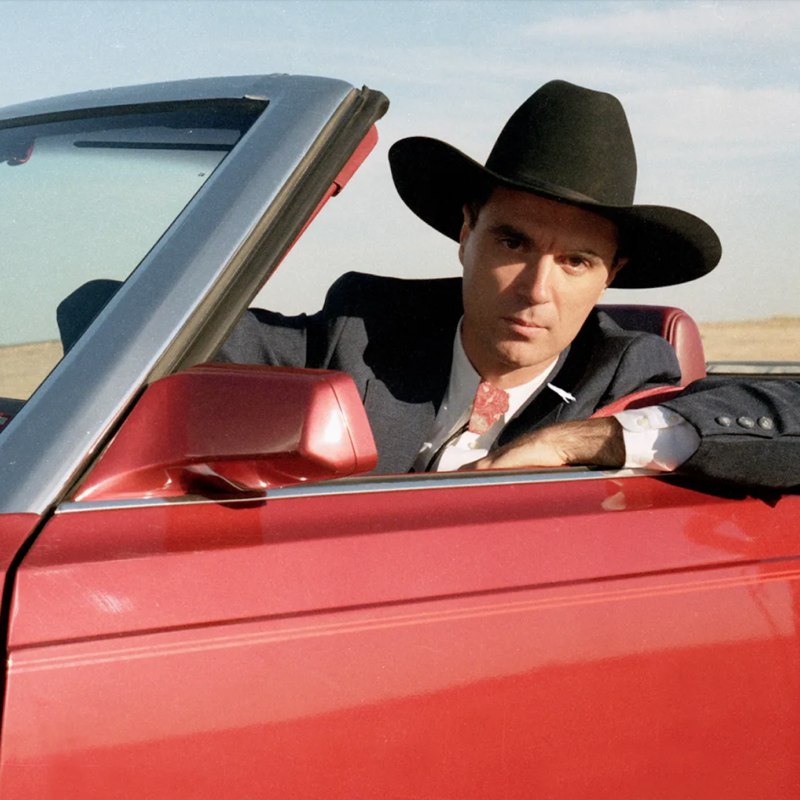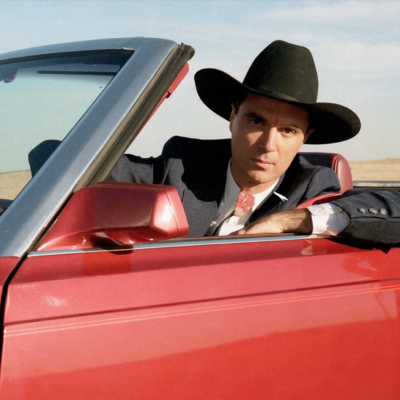The holiday vandal is strong, Elizabeth Breeden is certain of that. Strong enough to knock the head from "The Biker," Richard Whitehill‘s steel sculpture that pedals in suspended animation on McIntire Road, with a sledgehammer, damage that Whitehill was able to fix. Strong enough to scale Aaron Fein‘s "Transformer," a twisting, double-helix sculpture on the 250 Bypass displayed until the summer of 2002 when it imploded under some large force, damage that Fein would not fix. Strong enough to overturn Binney Meigs‘ "Blessed Rain" sculpture from 2003, valued at $5,000, and to wreak havoc on the bodiless business suit "A Bad Case of the Mondays," repaired by artist Rob Tarbell.
  The ArtInPlace 500: Turn the city into your cultural race track and take in the latest ArtInPlace exhibits while keeping your eyes peeled for the holiday art assassin. The ArtInPlace 500: Turn the city into your cultural race track and take in the latest ArtInPlace exhibits while keeping your eyes peeled for the holiday art assassin. |
"The vandal missed last Christmas, but struck on every Christmas before then," says Breeden, wife of the late artist David and mother of American Dumpster-diver Christian, to Curtain Calls. The Breeden family runs Biscuit Run Studio and the nonprofit ArtInPlace; the latter provides artists across the country with a stipend ($1,500 apiece for the current crop of artists) to create sculptures to withstand wind, rain and road rage in spaces around town. "We’re picking art at 35 miles per hour," says Breeden, who adds that, in her opinion, the intricacies of the artworks hold up when experienced in motion.
Curt wants to test that theory.
Climbing into his trusty "artomobile," Curt lit out to see all of the new ArtInPlace sculptures that will remain up until September 2008. Here’s a quick recap of CC’s itinerary:
The "artomobile" blasts off from the dark heart of Fontaine and roars past Michael Cottrell‘s "Valence," a steel sculpture that resembles party hats welded together at the corner of Stadium Road and Emmet Street. Curt continues north until he reaches the corner of Emmet and Barracks Road and Liz Vercruysse‘s "Stacked Totem Forms," a piece that, even from a moving car, Breeden calls "an exquisite example of clay work." The brown, oddly shaped spires are peculiar protrusions, sure, CC thinks as he wheels around towards Preston.
Curt rockets (er, law-abidingly rockets) past Kato Guggenheim‘s "Specters," a favorite on the trip for its whisp-thin steel figures that vaguely resemble spaceships from Spielberg‘s remake of War of the Worlds. With only a list of the 10 installations and their locations, CC’s eyes are constantly darting to every corner of every listed intersection like—he feels more neurotic than Woody Allen behind the wheel of a Hummer.
Desperate to cut this drive-by art review short to soothe his nerves, Curt ends his trip at Meade Park and James Davis‘ "This is Something That I Had to Go Through," an immense slab of iron and steel that stands roughly 10′ tall and bursts open at its center like a metal version of the Natural Bridge, valued at $25,000. Art may be possible at 35 miles per hour, but sometimes it’s more enjoyable to get out and stretch your legs.
Word perfect?
The saying "Almost only counts in horseshoes and hand grenades" sums up CC’s reading endeavors this year (which is not to say this year was the bomb). Besides Joshua Ferris‘ Then We Came to the End, Curt failed to hit some notable novels and nonfiction on the annual New York Times list. But, thanks to Elizabeth McCullough, Curt feels like he’s keeping good, literate company.
McCullough, a married mother of two, moved to Charlottesville from Middleburg in January 2005 so that her kids would have greater social opportunities. Inspired by literary events around Charlottesville, McCullough started Charlottesville Words (cvillewords.wordpress.com), a blog that celebrates its one-year anniversary on December 29.
Charlottesville Words runs the gamut from info on writing contests to reviews and general literary hobnobbery. For voyeurs, however, the blog details McCullough’s own reading habits, and here is where Curt wears his envy on his sleeve: McCullough also failed to hit a NYT notable, but has polished off 45 others.
After chatting for a while about Cormac McCarthy and Spiritual e-Soup author and former resident Ralph Barnett (whose book is now on shelves at the Barracks Road Barnes & Noble), McCullough gave CC a list of some of her favorites from that list of—seriously, 45?!
Angelhead by Greg Bottoms: A Virginia-based author, who also teaches nonfiction writing in Vermont, documents his brother’s schizophrenia (Read: Not recommended for holiday cheer).
Jamestown: A Novel by Matthew Sharpe: A futuristic, dystopic tale based on the Virginia settlement (Read: Not actually history).
One last story
Wedged between the NPR programming and classical music on WVTF, the Roanoke-based public radio station, last week was a story about UVA associate professor and filmmaker Kevin Everson‘s short flick, Something Else, which uses found footage of an interview with Miss Black Roanoke 1971. Everson’s film showed at New York’s Museum of Modern Art as well as the Bridge/Progressive Arts Initiative, and an ad for the MOMA show in The New Yorker caught the attention of WVTF reporter Connie Stevens.
Everson didn’t know the identity of Miss Black Roanoke 1971, but Stevens dug it up. Only 15 years old at the time of her victory, Renée Marie is now 52 and a renowned jazz singer.
Though Everson didn’t track down Marie before he made his film, he got in touch with her after Stevens spoke with him about the film. "I had a chance to talk with her," he tells Curt, "and I’m mailing copies of some films to her and her mom."
On the film festival front, Everson’s The Golden Age of Fish was not picked up for Sundance, and he is still waiting for a response from Film Festival Rotterdam. (Quick sidenote: ATO Pictures—the film branch of the Coran Capshaw/Dave Matthews media stamp—got two into the fest: the Julianne Moore vehicle Savage Grace and Choke, an adaptation of a book by Chuck "Fight Club" Palahniuk. More info on the way!) For now, like every notable book and piece of roadside art, Everson’s movies must wait.





